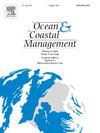“降峰填谷”:通过综合生物操纵使退化的沿海泻湖从生态失衡恢复到稳定的一种有希望的策略
IF 5.4
2区 环境科学与生态学
Q1 OCEANOGRAPHY
引用次数: 0
摘要
随着人为压力的加剧,水生生态系统经历了生物多样性丧失和营养失衡,损害了其稳定性和恢复力。生物操纵为生态恢复提供了一条很有前途的途径,但其长期有效性仍有待研究。本研究以云塘泻湖为例,采用Ecopath和Ecosim模型,采用“降峰补谷”策略,对其营养结构和生态系统功能进行了研究。通过Ecosim模拟和营养级谱分析测试了10种生物操纵场景。2008年,生态系统成熟度相对较低,持续不平衡,其特征是大部分能量流局限于较低的营养水平,转移效率仅为3.93%。减少高生物量官能团,补充低生物量官能团的综合生物操纵方法,在3轮干预后,转移效率提高幅度最大,达到10.99%。生态系统能量转移效率的提高通常在每次干预后的第三年达到峰值,尽管改善的速度随着时间的推移而降低,但泻湖继续朝着更成熟和稳定的状态发展。这些发现可以激励云塘泻湖的持续管理工作,并强调重复的、有针对性的生物操纵在恢复类似退化的沿海泻湖生态系统方面的潜力。本文章由计算机程序翻译,如有差异,请以英文原文为准。
“Peak reduction and trough filling”: A promising strategy for restoring a degraded coastal lagoon from ecological imbalance to stability through integrated biomanipulation
As anthropogenic pressures intensify, aquatic ecosystems experience biodiversity loss and trophic imbalances that compromise their stability and resilience. Biomanipulation offers a promising avenue for ecological restoration, but its long-term effectiveness remains understudied. Using Yundang Lagoon as a case study, this research employed Ecopath with Ecosim modeling and a “peak reduction and trough filling” strategy to explore trophic structure and ecosystem function. Ten biomanipulation scenarios were tested through Ecosim simulations and trophic level spectrum analyses. In 2008, ecosystem maturity was relatively low, with persistent imbalances characterized by most energy flow being confined to lower trophic levels and a transfer efficiency of only 3.93 %. A comprehensive biomanipulation approach that reduces high-biomass functional groups and supplements low-biomass groups produced the greatest increases in transfer efficiency, which rose to 10.99 % after three rounds of intervention. Gains in the ecosystem's energy transfer efficiency typically peak in the third year following each intervention, and although the rate of improvement diminishes over time, the lagoon continues to progress toward a more mature and stable state. These findings can inspire ongoing management efforts in Yundang Lagoon and underscore the potential of repeated, targeted biomanipulation for restoring similarly degraded coastal lagoon ecosystems.
求助全文
通过发布文献求助,成功后即可免费获取论文全文。
去求助
来源期刊

Ocean & Coastal Management
环境科学-海洋学
CiteScore
8.50
自引率
15.20%
发文量
321
审稿时长
60 days
期刊介绍:
Ocean & Coastal Management is the leading international journal dedicated to the study of all aspects of ocean and coastal management from the global to local levels.
We publish rigorously peer-reviewed manuscripts from all disciplines, and inter-/trans-disciplinary and co-designed research, but all submissions must make clear the relevance to management and/or governance issues relevant to the sustainable development and conservation of oceans and coasts.
Comparative studies (from sub-national to trans-national cases, and other management / policy arenas) are encouraged, as are studies that critically assess current management practices and governance approaches. Submissions involving robust analysis, development of theory, and improvement of management practice are especially welcome.
 求助内容:
求助内容: 应助结果提醒方式:
应助结果提醒方式:


